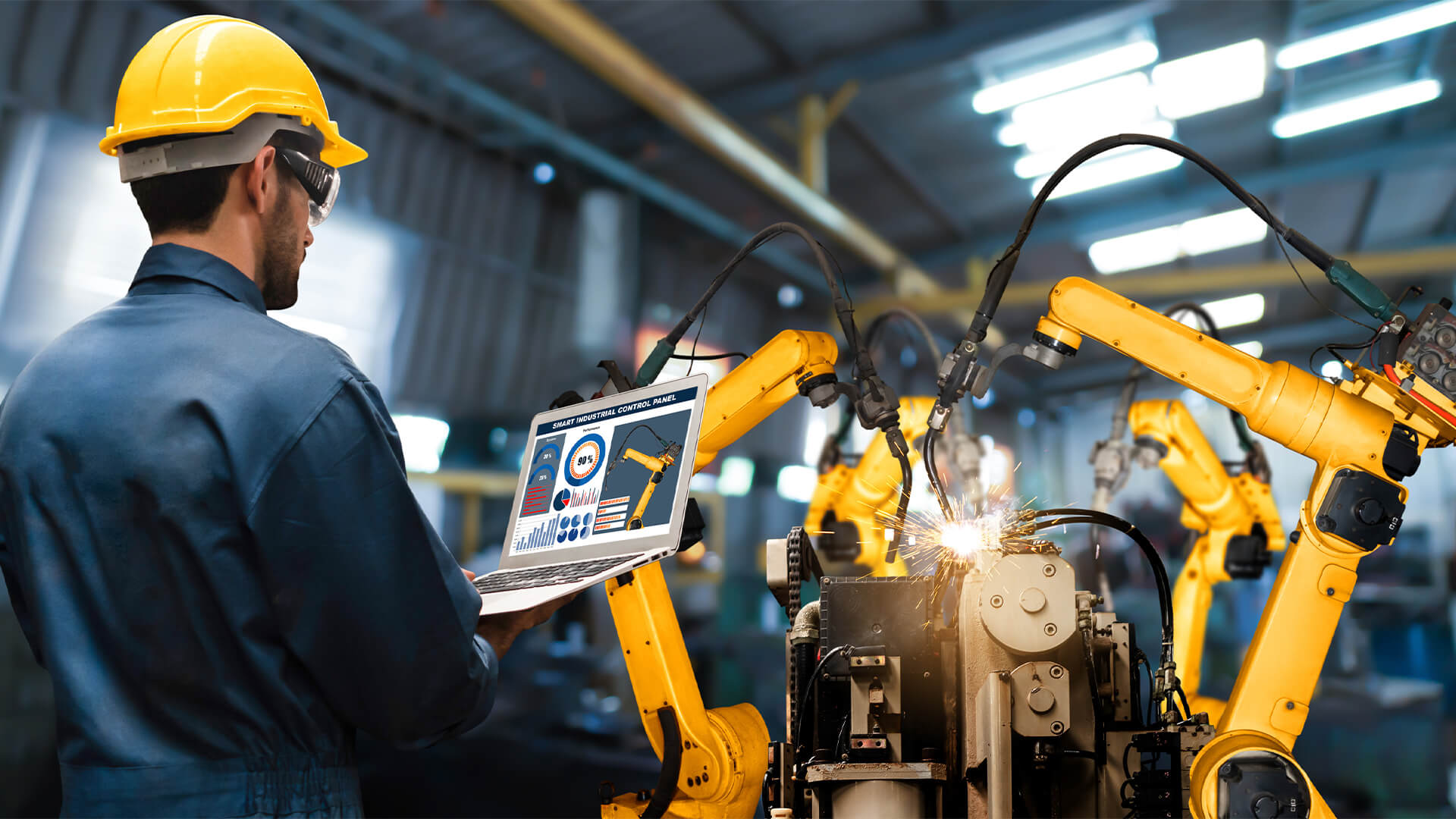A key topic that appears in discussions around industries such as manufacturing, where heavy machinery is a required part of many processes, is the health and safety of workers.
This is made clear when you look at the statistics released by the UK government on the number of fatal accidents that occurred across every industry. Some 123 people were fatally injured through 2021 to 2022, and the manufacturing sector had the second highest number of those injuries at 22.
Government statistics also outline that the workforce in the manufacturing industry totals around 2.5 million. Over the last five years the yearly average of reported major accidents sits at more than 3,100, while minor accidents are 4,100 in number. These accidents also keep workers offsite for more than seven days, which in turn causes delays within supply chains.
Technology has not only caused our lives to evolve on a personal level, but it has had an impact in our workspaces as well. In this article, we’ll look at how it’s changed the approach to health and safety in the industry for the better. We’ll also consider how this could continue to develop in the future.
Visualisation of concern areas (virtual & augmented reality)
Identifying risks and areas of caution before even setting foot onto the floor of a workspace can have a huge impact on the number of accidents that occur. Technology can help with identification by using emerging visual technology like virtual and augmented reality (VR and AR respectively).
VR headsets have become far more common among consumers, with market revenue seeing year-on-year growth hitting £701.8 million in the UK. The headsets and software can be used for training purposes to help workers in the manufacturing industry familiarise themselves with machinery and the dangers posed.
This can help to reduce the number of accidents taking place, an example is car manufacturer Ford reducing its injury rate by 70% thanks to implementing this tech for training. This could help make important processes like hardfacing welding even safer.
Automating processes with AI and robots
Some processes are naturally more unsafe than others, and the best way to reduce the risk of accidents and injuries is to remove the human element and refocus on how to execute these operations better. Enter automation and robotics.
Technology has assisted certain machines in their ability to run independently of human interaction, thanks to artificial intelligence (AI) that is programmable by engineers or purpose-built robots that operate these dangerous practices themselves.
A survey conducted by Guidance Automation found that 73% of businesses in manufacturing believed that automation is one of the key factors to the progression of the industry. This isn’t solely isolated to health and safety, but for the wider streamlining of processes to make things more efficient.
Onsite technology (wearables, communication, drones)
Gone are the days of walkie-talkies requiring a specific channel to tune into, communication technology for onsite and warehouse work has helped to improve contact across businesses in the industry. Rugged mobile devices that can take pictures and send text-based messages can identify areas of concern quickly and effectively.
Wearable technology has also led to advances in health and safety reporting and reduction. Tech that can detect threats in the air such as hazardous gas could be hugely beneficial to preventing accidents and impacting workers’ long-term health. A report from the Institute of Occupational Medicine stated that they could work together with traditional wearable protection like hard hats and strong gloves.
Wireless sensors that offer real-time wear data can be installed alongside wear solutions. Rodrigo Varas Vega, Managing Director of KW Technologies SA, a division of Welding Alloys, said:
“Using wear sensors to accurately monitor the rate of wear in areas which can’t easily be seen significantly reduces the risk of operators injuring themselves. This is in line with the remote control technology currently being used in a range of industrial applications such as mining operations.”
Another piece of emerging technology that can help to not only identify risks, but further investigate them, is drones. The market for commercially-available drones is estimated to increase by 9.1% in 2023, and this would be especially helpful in manufacturing as if an accident did occur, it’s safer to examine it from a distance through the onboard camera of a drone.
Implementing this technology doesn’t just have the potential to reduce accident rates, it’ll also help prevent injuries that could be fatal. While efficiency of your workforce is always something to be considered when it comes to how injuries could be detrimental to your business, you workers’ lives being at risk is a much-needed consideration.



























